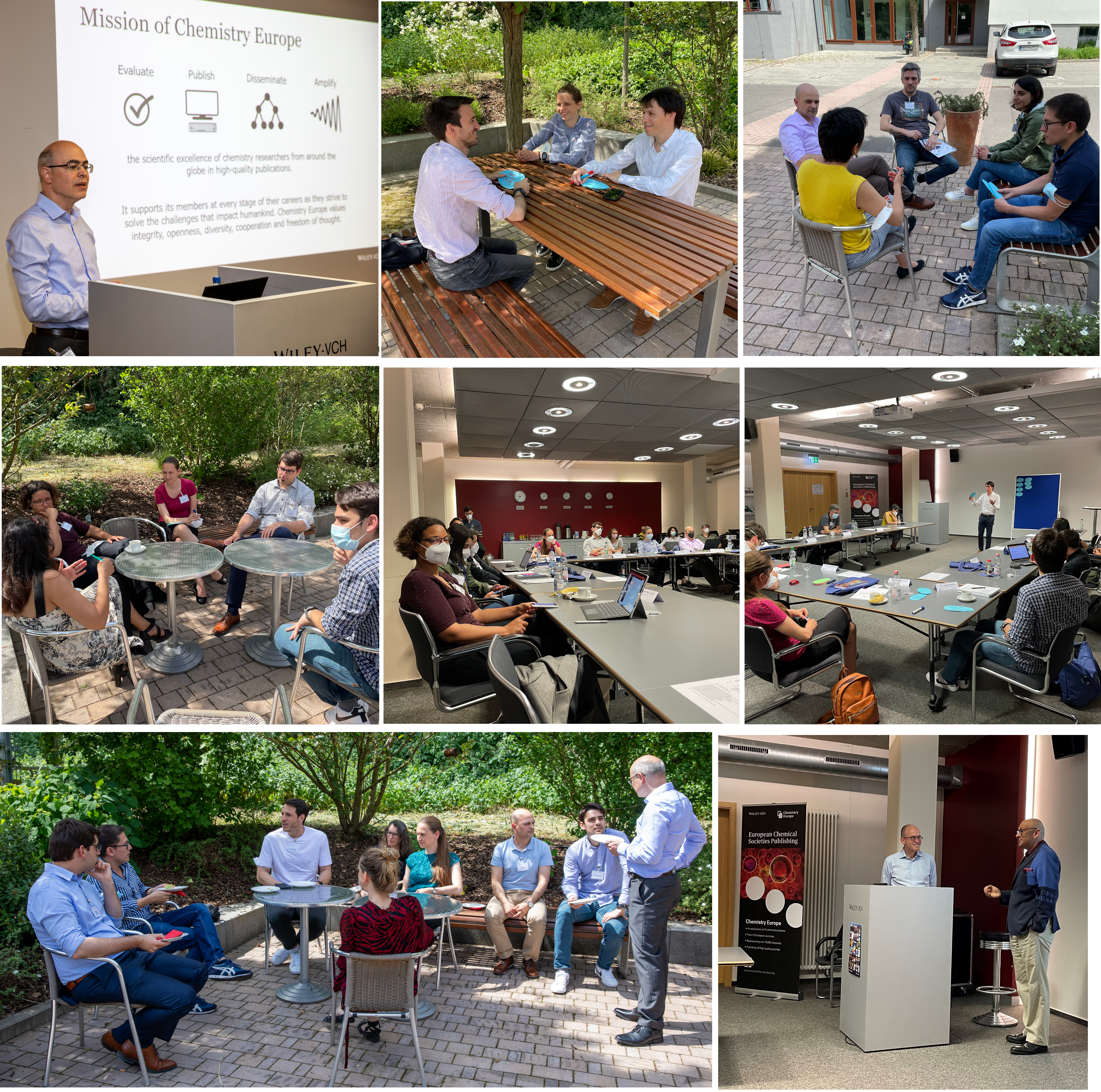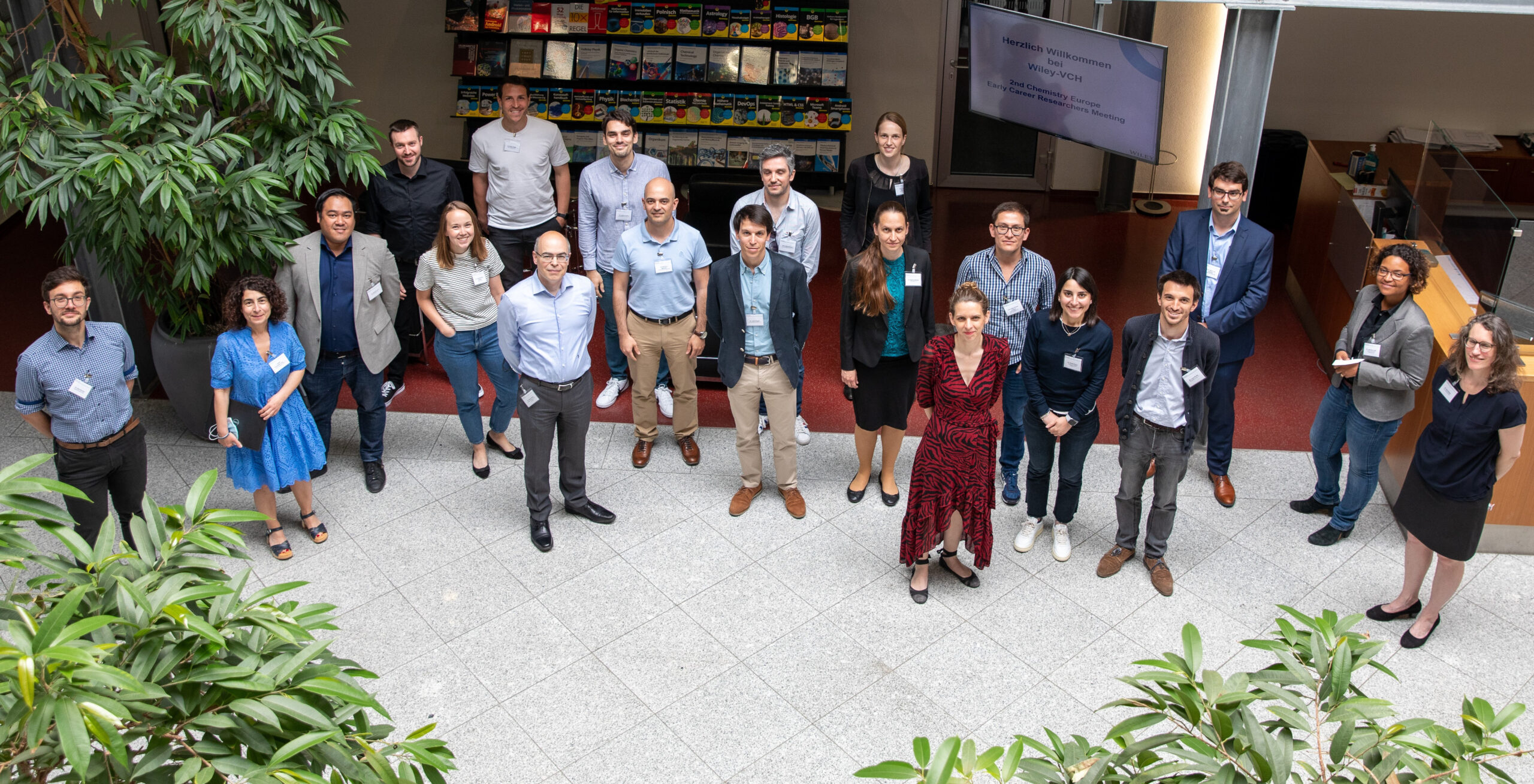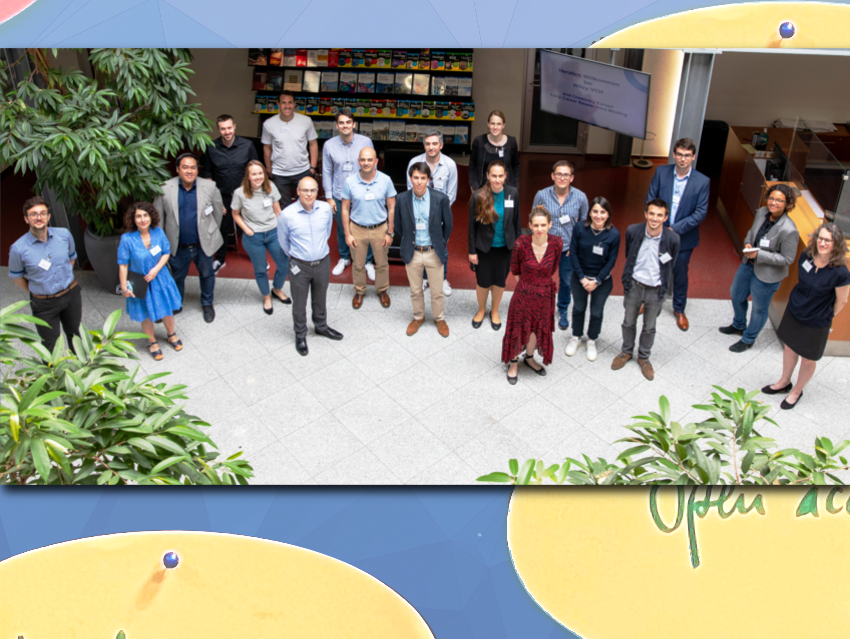Twelve guests from all over Europe, many editors of journals owned by Chemistry Europe, lively and very open discussions, informative talks around publishing trends, networking coffee breaks, and an evening in an informal atmosphere—finally, after a long break caused by the coronavirus pandemic, we were able to host the second Chemistry Europe Early Career Researchers Meeting at the Wiley-VCH offices in Weinheim, Germany. It was a great success and a very fruitful exchange, not least because we all missed it so much to finally meet and exchange ideas with others in person again.
Learning from Each Other
The meeting was held at the kind invitation of Chemistry Europe—an umbrella organization representing the publishing arm of 16 continental European chemical societies—and was attended by twelve promising early career researchers from Europe, as well as several editors of Chemistry Europe journals and the Chemistry Europe magazine, ChemistryViews. The young scientists were selected by the Chemistry Europe societies. They are active early career chemical researchers with an impressive range of international experience and expertise between them. They manage small research groups, are educators, and many are active members of various European chemical societies or committees.
This was the second time that such an event took place. Starting as an experiment to find out if researchers and editors can learn from each other, the first meeting in 2017 already turned out extremely successful. Therefore, a second one was planned two years later, in March 2019. Unfortunately, it had to be canceled at short notice due to the coronavirus pandemic. Now, finally, we were able to make up for it.
The idea is to bring together the next generation of chemists with the editors of the Chemistry Europe journals and ChemistryViews, to identify challenges related to publishing and science communication, share ideas and best practices, discuss the expectations of editors and authors/reviewers, and explore how mutual support can work. The meeting consisted of a mix of workshops and talks on topics such as society publishing, peer review, open science, science in the media, and social media. The young scientists were extremely engaged, open, and curious, and this led to the fruitful exchange between them and the editors.
An unexpected highlight was the visit of Brian Napack, Chief Executive Officer of John Wiley & Sons. He is based at Wiley’s headquarters in Hoboken, NJ, USA, but interrupted another meeting that brought him to Weinheim that day and took time to warmly welcome the participants and take the opportunity to meet these high potential young scientists.
 Snapshots: first talk, workshops and plenum discussions, coffee breaks, and surprise visit: Brian Napack, Chief Executive Officer of John Wiley & Sons, and Dr. Jose Oliveira, Senior Editorial Director Materials Science & Physics.
Snapshots: first talk, workshops and plenum discussions, coffee breaks, and surprise visit: Brian Napack, Chief Executive Officer of John Wiley & Sons, and Dr. Jose Oliveira, Senior Editorial Director Materials Science & Physics.
From the Life of Editors
Chemistry Europe
Haymo Ross, Publisher Chemistry Europe journals and Editor-in-Chief of Chemistry – A European Journal, started a presentation with a short introduction to the idea, history, and organization of Chemistry Europe. Since the late 1990s, Chemistry Europe has published successful peer-reviewed scientific journals. Currently, it publishes 19 journals and the ChemistryViews magazine and regularly holds virtual events.
Publishing in Chemistry Europe journals provides the participating societies with royalty payments based on article numbers and the countries of the submitting authors. Chemistry Europe allows its member societies to work together to support and advance the chemical sciences. The costs and the risk related to publishing the portfolio are covered by the publishing house.
What is a Good Article and Publishing Trends
This presentation was followed by a presentation on Scientometrics also by Haymo Ross with thoughts on impact factors, other article metrics, and the Declaration on Research Assessment (DORA). As a signatory to DORA, Wiley has committed to, among other things, greatly reducing the importance of the journal impact factor, offering a range of article-level metrics as alternatives, and promoting responsible authorship.
Axel Straube, Assistant Editor of ChemistryOpen, explained what full-time in-house editors do. It is part of Chemistry Europe’s model for success that the editors are employed full-time. They have worked in the lab, they have published, but they are not competitors doing the same research as the authors. Their duties include not only editing texts, but also conducting and acquiring peer reviews, managing published work (e.g., organizing and commissioning special collections), assigning/creating journal covers, writing editorials and news items, managing social media, copyediting (light editing and reviewing), developing the scope of the journals, attending conferences and doing campus visits to stay on top of what is happening in the community, being involved in publishing issues (e.g., open science, peer review, ethics, social media, marketing), and communicating with authors, reviewers, and societies.
Other presentations were given by Anne Deveson (Editor-in-Chief ChemistrySelect), Catharina Goedecke (Senior Associate Editor ChemistryViews), Charlotte Gers-Panther (Editor-in-Chief ChemCatChem), Francesca Novara (Editor-in-Chief ChemistryOpen), David Peralta (Editors-in-Chief ChemMedChem), and Ruben Ragg (Editor-in-Chief ChemBioChem). Topics included how to improve a scientific article, how to be a good reviewer, ethics in publishing, coverage in science news magazines, and how online communities can be used to network within the research community, but also with publishers and editors.
Publishing Good Research in the Best Possible Way
The participants were very happy with the meeting; it exceeded their expectations, and they found it very interesting and useful. They recommend continuing this type of meeting. The participants especially liked that they were able to meet the editors and that there was a personal and honest exchange. “I also liked the challenge that sometimes the group did not see eye to eye, and that was okay. That is what life and science are all about”, a participant said. The exchange and discussions helped to understand that both authors and editors are interested in publishing good research in the best possible way and that editors are approachable. Participants think that a European approach to scientific publishing that promotes inclusion, diversity, and collaboration will continue to benefit chemical research in the future.
The close collaboration between the European chemical societies and Wiley-VCH makes the flourishing Chemistry Europe publishing program possible. This is also one of the reasons why such meetings take place. Another is rooted in Chemistry Europe’s mission: It supports its members at every stage of their careers as they strive to solve the challenges that impact humankind.
 Workshop participants, including Chemistry Europe editors, assembled for a group photo in the Wiley-VCH atrium, Weinheim, Germany. (Photo: Mario Müller)
Workshop participants, including Chemistry Europe editors, assembled for a group photo in the Wiley-VCH atrium, Weinheim, Germany. (Photo: Mario Müller)
From left to right: Dr. Axel Straube, Assistant Editor ChemistryOpen, Josefa Fernández Loro, Head of Executive Office, Chemistry Europe, Dr. David Peralta, Editor-in-Chief ChemMedChem, Dr. Stuart Beardsworth, Deputy Editor Chemistry – A European Journal, Dr. Charlotte Gers-Panther, Editor-in-Chief ChemCatChem, Dr. Ruben Ragg, Editor-in-Chief ChemBioChem, Dr. Haymo Ross, Publisher Chemistry Europe journals, Editor-in-Chief Chemistry – A European Journal, Dr. Jaime Coelho, Portugal, Dr. Antonio J. Martínez, Spain, Dr. João Borges, Portugal, Dr. Hélio Albuquerque, Portugal, Dr. Pavla Perlíková, Czech Republic, Dr. Vera Krewald, Germany, Dr. Cornelia Meinert, France, Dr. Pablo Rivera-Fuentes, Switzerland, Dr. Emilia Paone, Italy, Dr. Luca Rivoira, Italy, Dr. Geert-Jan Graulus, Belgium, Dr. Jannika Lauth, Germany, Dr. Vera Köster, Editor-in-Chief ChemistryViews and event organization.
Also of Interest



